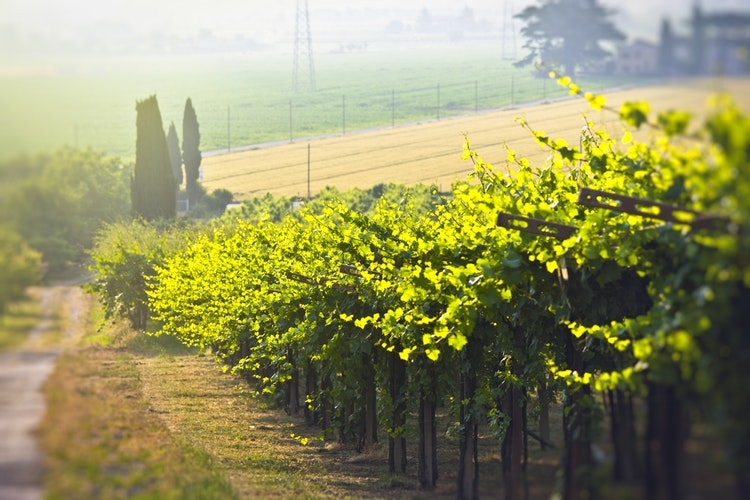
The world of Chardonnay is vast, intricate, and adept at revealing nuanced flavors with each bottle. If you’re interested in adding quality Chardonnay to your collection, you’ll love discovering the fascinating background and diverse traits of this popular wine.
What Is Chardonnay?
Chardonnay wine is made from the Chardonnay grape, which has its homeland in France’s cool-climate Burgundy region. This green-skinned grape is the offspring of Pinot Noir and Gouais Blanc. The Gouais grape, an ancient variety planted in northern France during the Medieval era, long ago fell out of favor and today is nearly extinct. Nevertheless, it contributed to the development of widely popular Chardonnay, and for that, people around the world are forever thankful.
What Makes It Unique?
This grape is known for its incredible versatility, where it can grow in numerous climates and do remarkably well in each location. As well as being able to adapt to new climates, the Chardonnay grape is a master at taking on the terroir of wherever it goes.
The Primary Tastes and Traits of Chardonnay
Due to its versatility, Chardonnay doesn’t have just one set of characteristics. Indeed, you can have a light-bodied Chardonnay or a full-bodied Chardonnay. You can have a crisp, zesty Chardonnay or a luscious, buttery smooth Chardonnay. You can also have a Chardonnay that falls somewhere in the middle. And that’s why we love it!
Typically, though, most Chardonnay will have moderate body and moderate acidity. Alcohol levels vary as well, but most wines made from Chardonnay grapes range from 12.5 to 14 percent alcohol by volume (ABV). Old World Chardonnay tends to be on the lower end of this range.
For primary tastes, Old World Chardonnays – like white Burgundy, Chablis or Champagne – tend to have plenty of citrus, minerals, pear and apple notes. They are often higher in acidity and are either aged in stainless steel or have more limited oak barrel aging.
Of course, Chardonnay is a wine that loves to make up its own rules. Even within the old-world style you’ll see significant variations: a Chablis might be very lean and highly acidic, a Chardonnay from Maconnais could have some oak influence and a richer taste, and a Chardonnay from the Cote d’Or could reveal a heady mix of oakiness, cream and ripe fruits. A Cote d’Or wine might also seem like a California Chardonnay at first sip, until the customary Burgundian minerality and acidity shone through.
Warmer climate Chardonnays typically come from California and other parts of North America, Australia, Chile and New Zealand. This wine may have fewer citrus and mineral notes, and more stone fruits like peach and nectarine. It will also reveal more tropical fruits like pineapple, mango, papaya or star fruit.
Some Chardonnays are aged in oak, while others are not. Regardless, new-world Chardonnays tend to have more oaked vintages than unoaked. And both old-world and new-world styles of Chardonnay reveal their unique terroir. This means it’s common to find Chardonnay with subtle hints of almond blossom, stone, jasmine, honeysuckle, honey, tea leaves, chalk and herbs.
The History of Chardonnay
Where is Chardonnay from? Chardonnay originated in Burgundy, but it wasn’t long before people outside of the region discovered just how incredibly versatile this grape could be.
Winemakers in the Champagne region took it on as well, blending it with a bit of Pinot Noir and Pinot Meunier for their now-iconic sparkling wine – although Blanc de Blancs Champagne is made from 100 percent Chardonnay grapes. Other regions of France fell in love with Chardonnay grapes as well, developing their own terroir-driven wines.
By the 1830s, Chardonnay vine clippings had made their way to Australia and New Zealand by way of James Busby. It appeared in California by the late 1800s as well, yet in all these countries, the wine remained at the fringes of popularity.
Everything shifted in the 1970s, and suddenly, Chardonnay was on the rise in California, Australia and elsewhere. When New World styles went overboard on oak aging in the 1980s and 1990s, the wine fell from popularity and saw groups claiming Anything But Chardonnay (ABC).
Eventually, New World winemakers abandoned that style. Today, they produce Chardonnay with exceptional balance. The wine can be partially aged in oak or left unoaked with a crisper but slightly fuller-bodied style.
Sidestepping to California Chardonnay
As mentioned above, Chardonnay arrived in California in the late 1800s. John H. Drummond was one of the winemakers who imported this green-skinned grape, and he grew it in his Kenwood winery just outside of Santa Rosa. Other winemakers tried it out too, and that inherent quality became apparent at the 1976 Judgment of Paris.
Today, California Chardonnay is big business, and it is the second-most-grown varietal in the Golden State. There are more than 95,000 vineyard acres of this versatile grape, with a vast array of soils, climates and elevations to choose from.
Different Chardonnays have noticeable differences depending on where they grow. In California, Chardonnay from Sonoma or the Santa Maria Valley can slightly resemble white Burgundy with its minerals and citrus notes, while Chardonnay from Napa will have those luscious tropical fruits. A California Chardonnay will differ from white Burgundy thanks to juicier fruits and a fuller body.
Whether you love fresh and crisp Chardonnays or creamy and juicy Chardonnays, you’ll enjoy each discovery you make. This is a varietal that keeps on giving, where new bottlings tap into the unique terroir around them.
To discover the best Chardonnays, we invite you to visit our extensive Chardonnay collection. We take pride in sourcing Chardonnays of the highest quality, gathering them together from vineyards across California, Burgundy and other exceptional wine-producing regions.